Arlington House
Introduction
Text-to-speech Audio
Images
Arlington House is a neoclassical mansion, its most prominent feature being the large columns. It overlooks part of what is now Arlington National Cemetery.
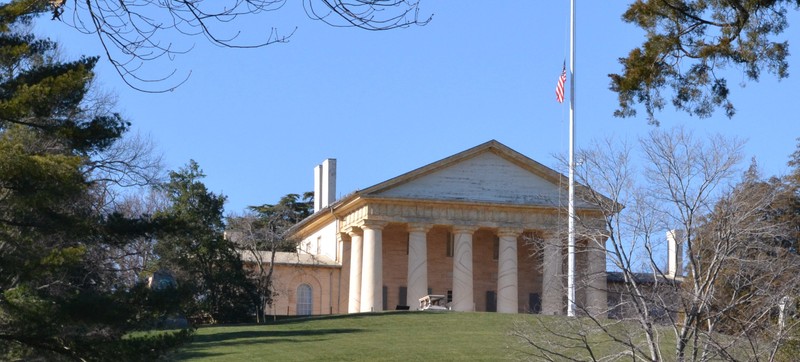
View of Arlington National Cemetery, the Potomac River, and downtown Washington, D.C. from the Arlington House. Wikimedia Commons.
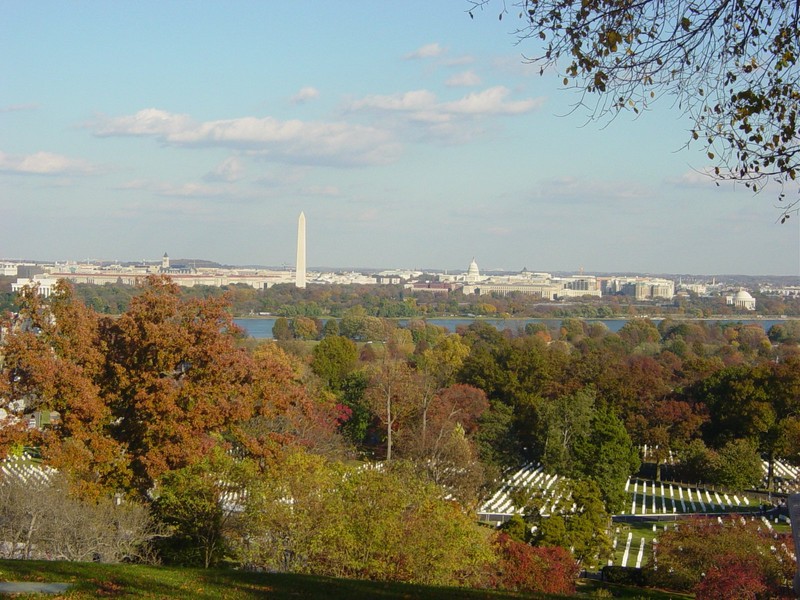
George Washington Parke Custis, grandson of Martha Washington, built Arlington House. He operated a plantation at Arlington and filled the mansion with antiques and objects associated with President George Washington. National Park Service.
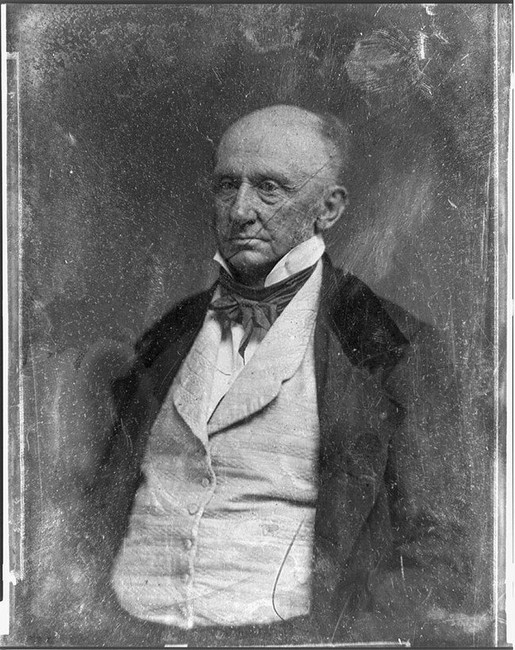
Mary Anna Custis Lee grew up at Arlington House and inherited it from her father in 1857. She and her husband, Robert E. Lee, married at the house. National Park Service.
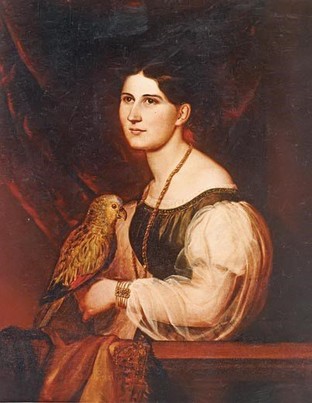
Robert E. Lee lived at Arlington House with his wife, Mary Lee, and their children. He was a decorated member of the U.S. military until Virginia seceded from the Union and he joined the Confederacy. The house was dedicated to his memory in 1955. National
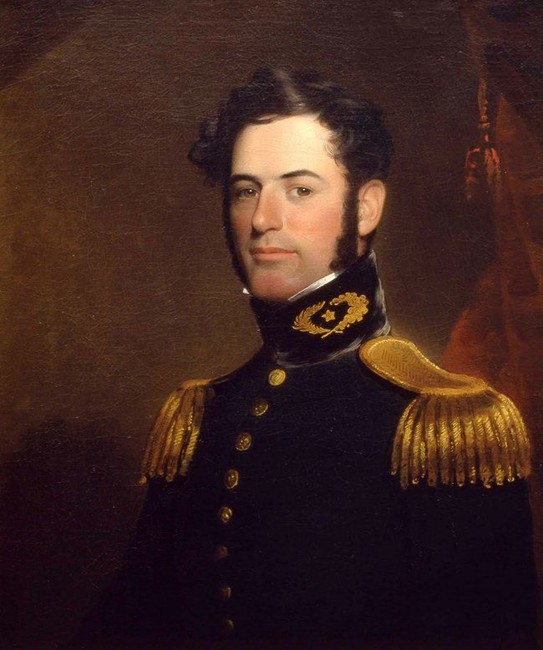
Born into slavery at Arlington, Selina Norris Gray served as Mary Lee's head housekeeper. She is credited with protecting family heirlooms and artifacts related to George Washington once Union troops occupied the house. National Park Service.
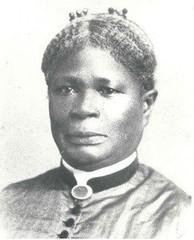
Charles Syphax was a slave transferred from Mount Vernon to Arlington by the Custis family. Many descendants of Syphax and his wife, Maria Carter Syphax, were influential leaders in Arlington. National Park Service.
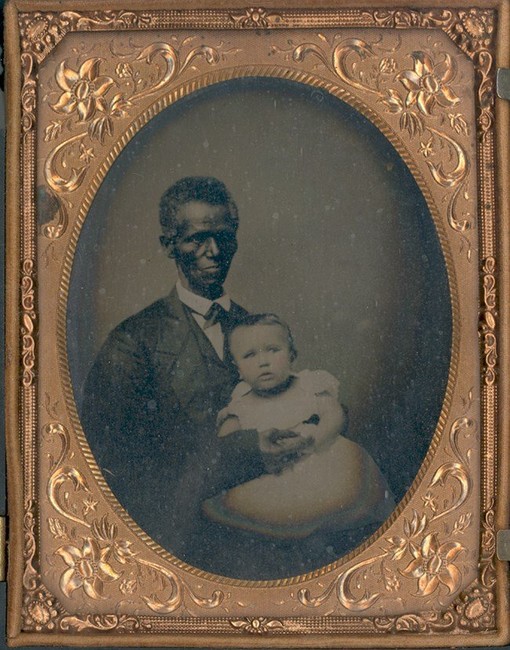
Arlington House came under Union occupation beginning in May 1861. In this image from 1864, Union soldiers pose on the grand front porch of the mansion. National Archives.
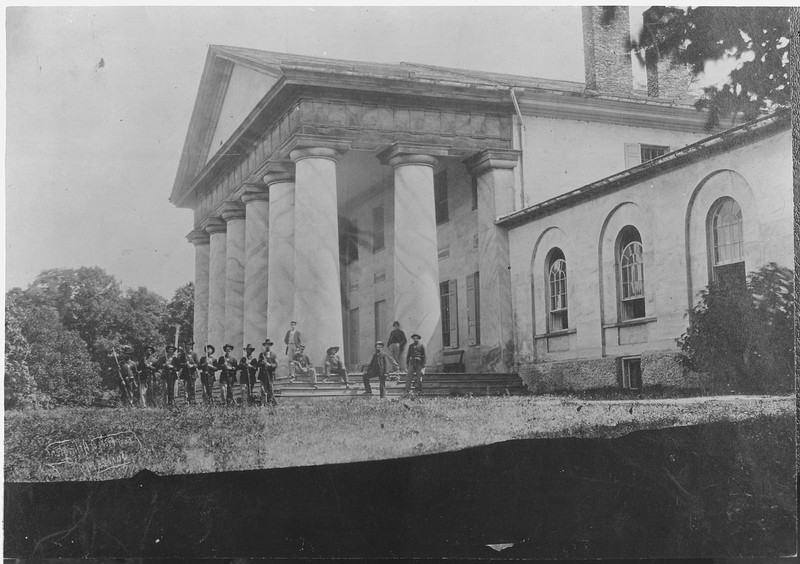
ca.1905 postcard of rear yard of Arlington House (Rotograph Company)

Backstory and Context
Text-to-speech Audio
Arlington House is associated with a number of significant families in United States history, including the Custis family, descended from First Lady Martha Custis Washington, and the Lee family. It was also a functioning plantation where dozens of slaves labored at one time. Over 1,000 acres of the estate land was later transformed into Arlington National Cemetery. According to the National Park Service, the house raises important questions about “military service; sacrifice; citizenship; duty; loyalty; slavery and freedom.”
In 1803, George Washington Parke Custis began constructing a mansion on 1,100 acres of land that he inherited after the death of his father. Custis was the grandson of Martha Custis Washington and adopted son of George Washington. He hired English architect George Hadfield, the second Architect of the United States Capitol, to design the two-story Greek revival house. It took nearly sixteen years to complete the mansion, which was constructed in three phases. Enslaved people made the house’s brick and stucco materials and harvested wood to create support beams and floors. Custis and his wife, Mary Lee Fitzhugh Custis, both lived the rest of their lives at Arlington House and are buried on the property.
The Custises’ only surviving child, Mary Anna Custis, married Robert E. Lee in the family parlor at Arlington House on June 30, 1831. Mary Lee was an educated and politically-conscious individual who also enjoyed painting, gardening, and literature. Her husband, Robert E. Lee, the son of Virginia statesman Henry Lee, began an illustrious military career after graduating at the top of his class from the United States Military Academy at West Point in 1829. He served in the United States Army as a military engineer and rose in ranks through his service in the Mexican-American War, conflicts in Texas, and as Superintendent of West Point. The couple lived and raised their children at Arlington House, though Robert was often away for military duties. In 1857, Mary Lee inherited Arlington House upon her father’s death. Robert became more involved with Arlington House, acting as executor of the estate and managing the property.
It was also in Arlington House that Robert E. Lee chose to resign from the United States Army and join the Confederacy. In April 1861, Virginia seceded from the Union and the first battle of the Civil War took place at Fort Sumter in South Carolina. Lee had been opposed to rebellion, faithfully serving the United States military for more than thirty years. However, Lee ultimately chose loyalty to his state over his country. Lee was not a pro-slavery ideologue like some of his contemporaries, yet his personal writings, voting record, and actions as a Confederate general reflect a worldview that Blacks both enslaved and free were inferior to whites. According to historian Eric Foner, “He felt that the ‘painful discipline’ to which they were subjected benefited Blacks by elevating them from barbarism to civilization and introducing them to Christianity.” After the Civil War, Lee became a mythic figure who embodied the lost Southern cause.
Over the course of sixty years, hundreds of enslaved people labored on the Arlington House estate. George Washington Parke Custis brought the first slaves, inherited through his mother, to Arlington House. They tended to the house and the fields of corn and wheat on the property. Some of the children learned to read and write under the instruction of Mary Lee and other women in the house; they followed a larger Christian belief at the time that reading the Bible would “save” Blacks. Though the Arlington House families forged relationships with some of their slaves, they supported an institution that held people as property who lacked rights and personal autonomy. The slaves’ contributions to Arlington House, however, were significant. One notable family at Arlington was the Syphax family. Charles Syphax, one of the original Custis slaves, managed the dining room at Arlington House. His children and wife, Maria Carter Syphax, were freed in 1826 and established a home on land given to them. Their descendants became business owners, elected officials, and founders of African American schools in D.C. Selina Norris Gray, Mary Lee’s head housekeeper, was entrusted with the house after the Lees evacuated Arlington under threat of Union occupation. Born into slavery at Arlington, Gray was married in the family parlor like Mary and Robert E. Lee. Once Union soldiers occupied the mansion in 1861, some of the family heirlooms went missing. She instructed the soldiers and General Irvin McDowell not to protect these heirlooms. Her efforts ensured artifacts associated with President George Washington were not lost to history.
In 1864, after the Lees fled Arlington House, the property was confiscated by the federal government for "unpaid property taxes” and appropriated "for government and military use.” In 1874, George Washington Custis Lee, the Lees’s oldest son, successfully sued the federal government and briefly regained ownership of the property, until selling it back to the government in 1883. The house served as headquarters for Arlington National Cemetery. It remained the headquarters until 1928 when Congress authorized the property be restored. In 1955, the ninetieth anniversary of the end of the Civil War, Congress dedicated Arlington House as a “permanent memorial” to Robert E. Lee. The Lost Cause narrative remained strong at this time, and the memorial emphasized Lee’s gentlemanly qualities. An act in 1973 changed the name from the Custis-Lee Mansion to the Arlington House, the Robert E. Lee Memorial.
The National Park Service has overseen the property since 1933. It continues to interpret Arlington House as a memorial to Robert E. Lee, while also exploring the house’s ties to the Washington and Custis families and the enslaved people who ran the plantation. Restoration efforts are not only caring for the mansion, but also emphasizing the slave quarters and gardens. The mansion is closed from March 2018 to early 2020 for a multi-million dollar restoration but museum exhibits have been set up in a nearby building.
Sources
Berman, Russell. “The Nation's Official Memorial to Robert E. Lee Gets a Rewrite.” The Atlantic. August 18, 2017. Accessed December 2017. https://www.theatlantic.com/politics/archive/2017/08/a-national-memorial-to-robert-e-lee-gets-a-rewrite/537237/
Foner, Eric. “The Making and the Breaking of the Legend of Robert E. Lee.” The New York Times. August 28, 2017. Accessed December 2017. https://www.nytimes.com/2017/08/28/books/review/eric-foner-robert-e-lee.html?_r=0
National Park Service. “Arlington House.” National Landmark Nomination Form. Washington, D.C.: National Park Service, Department of the Interior, 1966. Accessed December 2017. http://www.dhr.Virginia.gov/registers/Counties/Arlington/000-0001_Arlington_House_1966_Final_Nomination.pdf
National Park Service. “Mary Anna Randolph Custis Lee.” Arlington House, The Robert E. Lee Memorial. National Park Service. Last updated April 3, 2017. Accessed December 2017. https://www.nps.gov/arho/learn/historyculture/mary-lee.htm
National Park Service. “Robert E. Lee.” Arlington House, The Robert E. Lee Memorial. National Park Service. Last updated March 2, 2017. Accessed December 2017. https://www.nps.gov/arho/learn/historyculture/robert-lee.htm
National Park Service. “School Room.” Arlington House, The Robert E. Lee Memorial. National Park Service. Last updated March 2, 2017. Accessed December 2017. https://www.nps.gov/arho/learn/historyculture/schoolroom.htm
National Park Service. “Selina Gray.” Arlington House, The Robert E. Lee Memorial. National Park Service. Last updated January 27, 2017. Accessed December 2017. https://www.nps.gov/arho/learn/historyculture/gray.htm
National Park Service. “Slavery at Arlington.” Arlington House, The Robert E. Lee Memorial. National Park Service. Last updated January 27, 2017. Accessed December 2017. https://www.nps.gov/arho/learn/historyculture/slavery.htm
National Park Service. “Syphax Family.” Arlington House, The Robert E. Lee Memorial. National Park Service. Last updated January 27, 2017. Accessed December 2017. https://www.nps.gov/arho/learn/historyculture/syphax.htm
Images:
"View of Arlington National Cemetery..." Photo. 2005. Sean McCue. Wikimedia Commons. Accessed December 2017. https://en.wikipedia.org/wiki/Arlington_House,_The_Robert_E._Lee_Memorial#/media/File:Washington_DC_...
Arlington House individual portraits. Accessed December 2017. https://www.nps.gov/arho/
“East front of Arlington Mansion (General Lee’s home) with Union soldiers on the lawn.” Photo. 1864. War Department. Pentagon Library. Records of the War Department General and Special Staffs, 1860 - 1952, Record Group 165. National Archives at College Park, College Park, MD [online version available through the Archival Research Catalog (ARC identifier 533118) National Archives and Records Administration] https://catalog.archives.gov/id/533118
https://www.loc.gov/item/2013646981/
